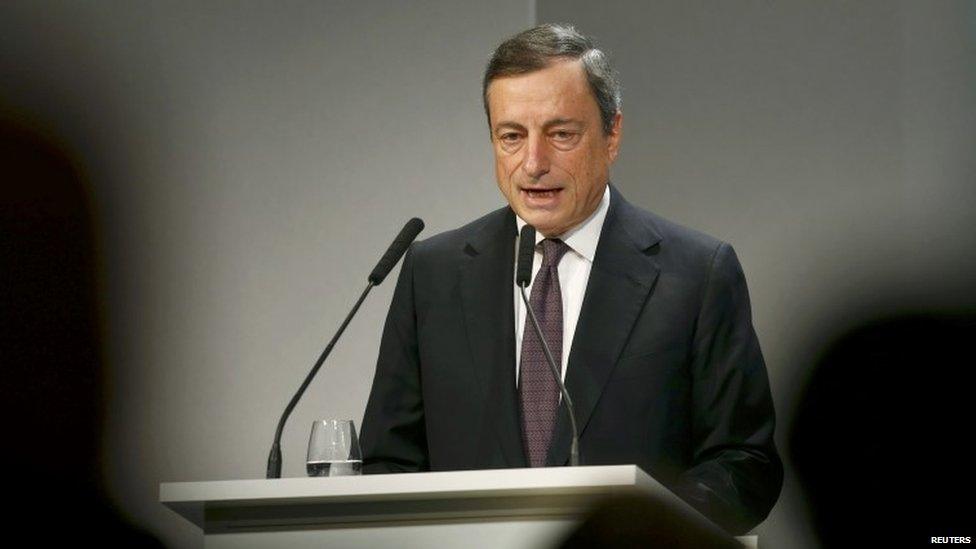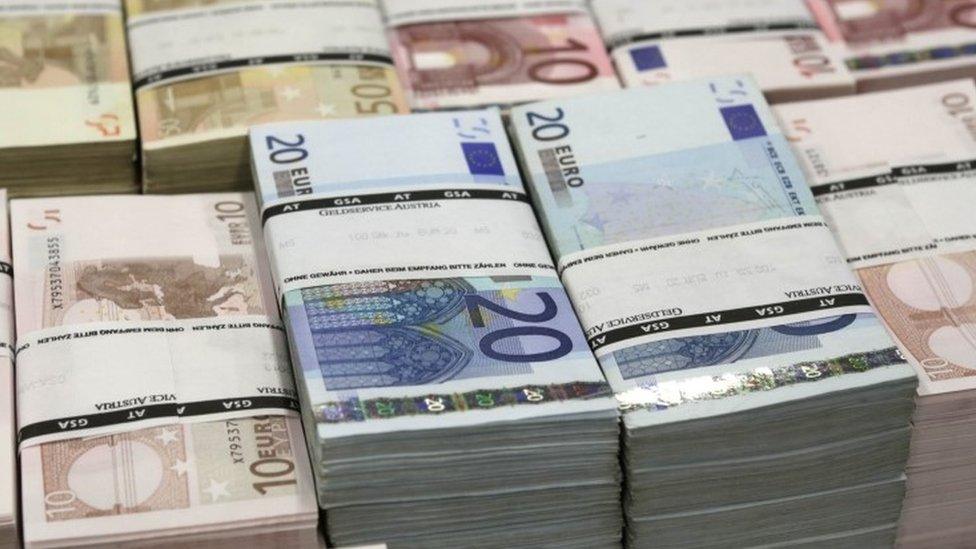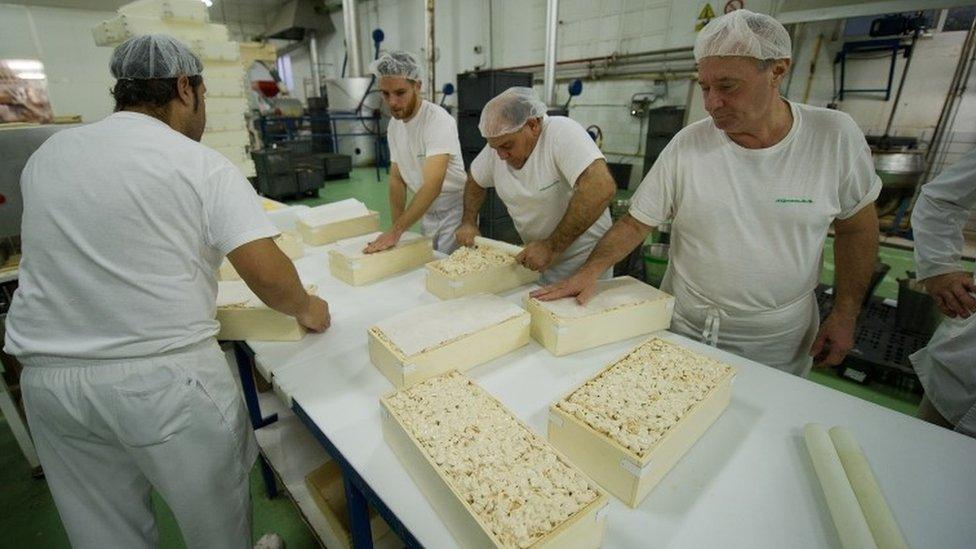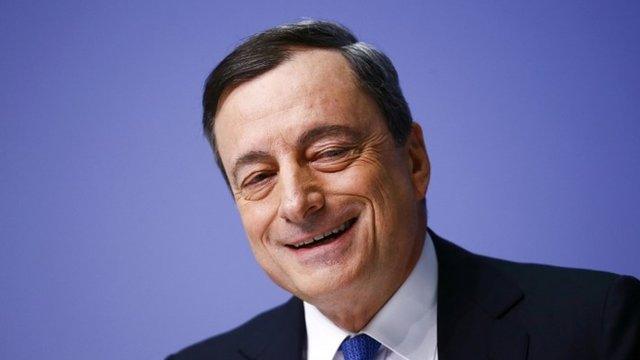Eurozone stimulus package looms
- Published

Mario Draghi needs to boost growth in the eurozone
The European Central Bank is expected to announce further stimulus measures to boost growth in the eurozone's economy later on Thursday.
At its policy meeting, the ECB has the option of stepping up "quantitative easing", buying financial assets with newly created money.
It could also cut the interest rate on overnight bank deposits at the ECB.
This is to encourage lending, as with a rate of -0.2%, the banks in effect pay the ECB for holding their reserves.
The policy is designed to make it more profitable for banks to offer loans to consumers and businesses, ensuring a free flow of money.

The ECB wants to remove constraints on money supply in the eurozone
Low inflation
The immediate problem driving this expected action is inflation. It is too low.
The most recent figure for the eurozone is 0.1%. The ECB's target is below, but close to, 2%.
The figure has been below zero - that is, prices were falling - as recently as September.
This has been because of falls in international energy prices, particularly crude oil.
But "core inflation", which strips out volatile food and energy prices, is also low, hovering persistently around 1%.
The latest figure, for November, was down on the previous month.
So why would low inflation be seen as a problem?
ECB President Mario Draghi spelt out, external a number of reasons in a speech last year.
Low or even below-zero inflation - otherwise known as deflation - can aggravate debt problems. It can lead to households and firms delaying spending.
For some countries which need to improve competitiveness, low average inflation across the eurozone means they may need to have falling prices, as some do: Greece, Cyprus and Spain.
It doesn't mean their economies cannot recover, but it is a potential obstacle to stronger growth.

Spanish factory activity is being hampered by deflation
Mr Draghi has made a number of comments suggesting that the ECB will take further steps to get inflation up.
At the ECB's last policy meeting in October,, external he said the amount of stimulus provided would be re-examined in December.
As mentioned, this is likely to be a cut in the interest rate on overnight bank deposits held at the central bank and a ramping up of its quantitative easing (QE) programme, which it launched in January.
This involves buying financial assets, notably government bonds or debt, with newly created money.
The objective is to push down interest rates across the economy more widely than can be achieved by the central bank's conventional interest rate policies.
There are several ways the ECB could achieve its QE.
It could increase its monthly spending from the current level of €60bn or it could commit to continuing beyond the tentative date it has set for ending the programme, which is September 2016.
The ECB could also consider extending the range of asset types that it purchases.
Currently it is buying government debt and some types of loans that have been bundled together and repackaged as financial assets.
Different cycles
The ECB's position is in stark contrast to that of the US.
Inflation is not an immediate problem in the US, but the jobs situation and economic growth are a good deal stronger than in the eurozone.
The Federal Reserve ended its QE programme a year ago. It is considering raising interest rates and it is expected to make its first such move later this month.
The eurozone is a long way from taking any such steps.
- Published3 September 2015

- Published22 January 2015
